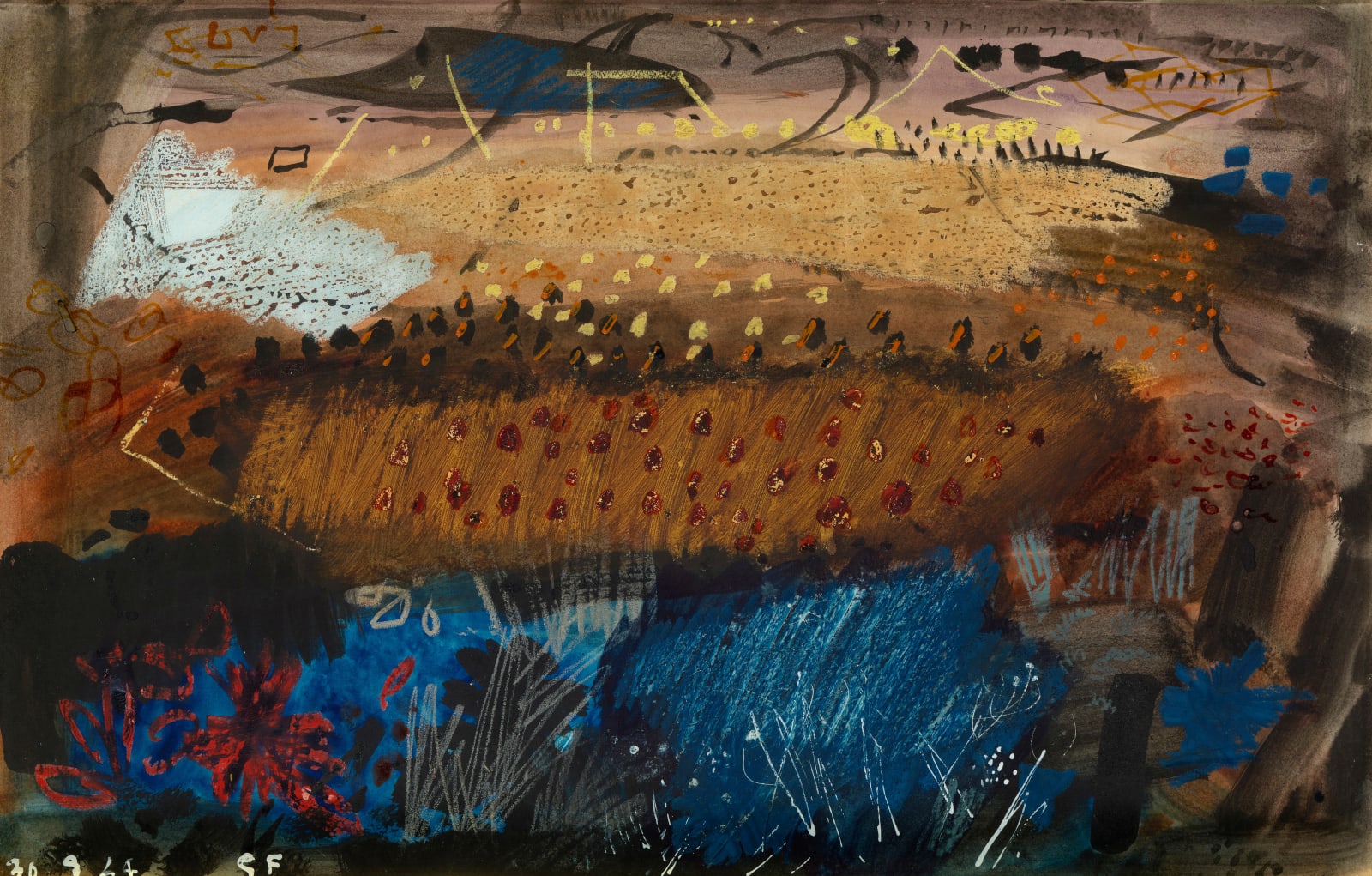John Piper
Garn Fawr, 1964
Watercolour, gouache, coloured chalk and wax resist on paper
14 x 21 1/2 in / 35.5 x 54.5 cm
Inscribed and dated '30 9 64 GF' (lower left)
Piper’s first encounter with Wales took place in 1943, where he was assigned to paint the Manod Mawr quarry, used to store Royal Academy and National Gallery artworks during the...
Piper’s first encounter with Wales took place in 1943, where he was assigned to paint the Manod Mawr quarry, used to store Royal Academy and National Gallery artworks during the Blitz. Although this commission never took place his visit saw him captivated by the dramatic geological formations and colours of the Welsh scenery. Piper filled numerous sketchbooks with drawings and observation notes for future paintings, mesmerised by how the landscape appeared to transform with the change in weather.
By the 1960s, Piper was a frequent visitor to the region. He and his wife Myfanwy acquired a cottage nestled within the rugged Welsh hills of Garn Fawr in 1962. Piper used the home as a studio and stayed regularly to continue his exploration of both the coast and nearby mountains, taking long hikes to capture the scenery en plein air. Towards the end of the 1960s, Piper’s artistic output shifted away from sombre documentations of the environment and instead became more experimental and carefree in mark-making as a celebration of place. Bright layers of colour and line are applied with vigour, capturing the energy and emotion that the artist felt while experiencing these specific locations. Piper comments on this, stating 'The titles are the names of places, meaning that there was an involvement there at a special time: an experience affected by the weather, the season and the country but above all concerned with the exact location and its spirit for me ... the emotion generated by [the involvement] at one moment in a special place.’ (J. Piper quoted in Exhibition catalogue, European Topography 1967-69, Oil paintings and gouaches, London, Marlborough Fine Art, 1969).
By the 1960s, Piper was a frequent visitor to the region. He and his wife Myfanwy acquired a cottage nestled within the rugged Welsh hills of Garn Fawr in 1962. Piper used the home as a studio and stayed regularly to continue his exploration of both the coast and nearby mountains, taking long hikes to capture the scenery en plein air. Towards the end of the 1960s, Piper’s artistic output shifted away from sombre documentations of the environment and instead became more experimental and carefree in mark-making as a celebration of place. Bright layers of colour and line are applied with vigour, capturing the energy and emotion that the artist felt while experiencing these specific locations. Piper comments on this, stating 'The titles are the names of places, meaning that there was an involvement there at a special time: an experience affected by the weather, the season and the country but above all concerned with the exact location and its spirit for me ... the emotion generated by [the involvement] at one moment in a special place.’ (J. Piper quoted in Exhibition catalogue, European Topography 1967-69, Oil paintings and gouaches, London, Marlborough Fine Art, 1969).
Provenance
Waterhouse & Dodd, London.Private collection, UK.
